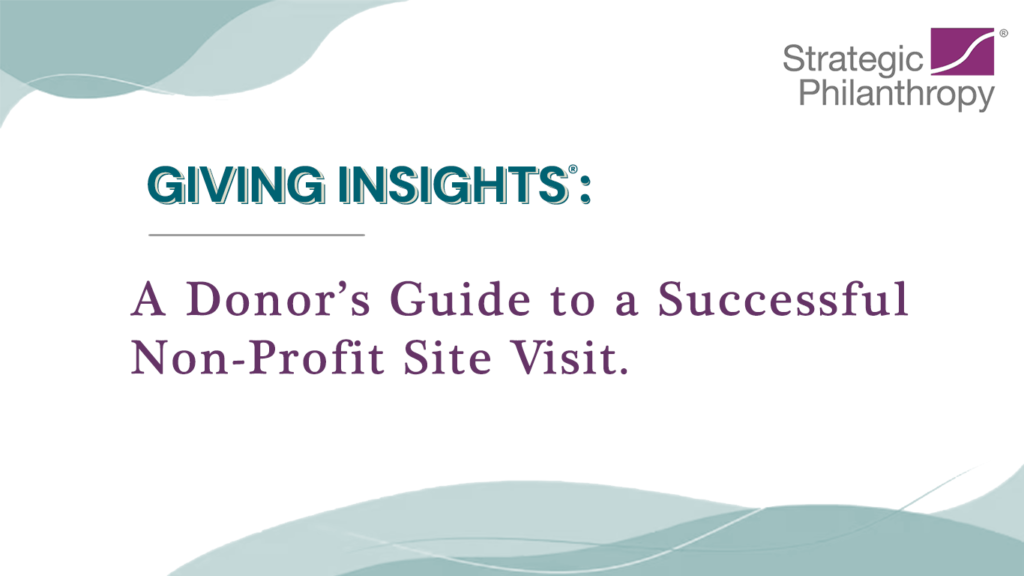(3-minute read)
One of the best ways to better understand and evaluate prospective grantee organizations is to engage directly with the leadership and program participants. We encourage and facilitate site visits for clients so they can gain first-hand, insights into program innovations, operations, and impact.
Below are some recommendations that can help enhance the value of a site visit.
1. Define Your Purpose and Objectives: Why are you doing the site visit? What do you want to learn? Is this an exploratory visit to vet a potential partnership? Are you assessing how a program addresses beneficiary needs? Set clear objectives so you make the best use of your time and that of the organization’s leadership and share those objectives with the organization. Remember that you are exploring opportunities for long-term collaboration and you, and the organization, need to be as open and transparent as possible.
It is always good practice to let the organization know, in advance, what you want to accomplish when you visit so they can be prepared. If you want to see programs or initiatives in action, let them know so they can make arrangements accordingly.
2. Preparation: Reach out well in advance. Nonprofit schedules are tight, and staff resources are often limited. Determine who will join you for the site visit. While you don’t need a large entourage, a couple of individuals with different perspectives, in different roles, increase the opportunity for a more robust conversation.
Before the visit, meet with any of your (internal or external) advisors to review the objectives for the site visit. Do your homework; visit their website and review materials…any annual or impact reports or financial information. If information is missing, request it at least 10 days beforehand. Make a list of the questions you want to ask about their work, impact, challenges, and future goals.
3. Logistics: Agree on a mutually beneficial time and choose a visit length that is considerate of the organization’s day-to-day operations.
4. During the Visit: Meet the individuals driving the organization, from those working on the ground to the leaders steering the ship. If you have made arrangements in advance, you can observe their programs in action —this will give you a real sense of their community engagement and how they go about their work.
Open-ended questions can get to the heart of their experiences. What challenges do they face? What successes have they celebrated? Taking notes can help to reflect on your visit later.
5. Offer an honorarium: Whether or not you plan to support the organization’s work, it is respectful to recognize their time and effort by donating. At minimum, we recommend an honorarium of $300. The length of time, complexity, and/or the number of participants could dictate a larger amount. Consider bringing a blank check so you can choose the desired amount and give it to the staff before leaving.
6. Follow-up communication: After the visit, send a note or email thanking them for their time. Share your observations and any further questions. If you decide to support the organization, let them know.
A well-conducted site visit can illuminate the strengths and needs of a nonprofit, inspire your involvement, and solidify a partnership rooted in shared values and commitment to cause.
——————
Let us plan and execute your own Community Field Trip™.
We organize and execute field trips for UHNW/HNW individuals and families across the country who want to learn first-hand about an issue affecting their community.
Advisors can read this PDF to learn why joining their philanthropy-minded clients on a Community Field Trip™ can add be a powerful tool in building stronger relationships with them.
